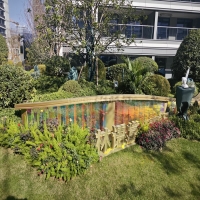Welcome to the website for landscape facilities products and knowledge.
What is the bin’s performance in areas with high levels of air pollution or industrial activity?
Bins used in areas with high air pollution or industrial activity face unique challenges due to exposure to corrosive chemicals, particulate matter, and extreme environmental conditions. Their performance largely depends on material durability, design robustness, and maintenance practices.
Material Durability:
Bins made from corrosion-resistant materials like stainless steel, polyethylene, or coated metals perform better in polluted environments. These materials resist chemical reactions and degradation caused by acidic or alkaline pollutants.
Design Considerations:
Industrial-grade bins often feature sealed lids, reinforced structures, and anti-corrosion coatings to minimize damage from airborne contaminants. Heavy-duty wheels and handles ensure mobility despite harsh conditions.
Maintenance Requirements:
Frequent cleaning and inspections are essential to prevent buildup of pollutants that could weaken the bin’s structure. Rust-proof treatments and UV-resistant finishes extend lifespan in high-pollution zones.
Efficiency in Waste Management:
Despite environmental stressors, well-designed bins maintain functionality, ensuring safe waste containment and reducing leakage risks. Their performance is critical for maintaining hygiene and compliance with industrial waste regulations.
In summary, bins in polluted or industrial areas must prioritize resilience and adaptability to remain effective, requiring careful material selection and proactive upkeep.
Related search:

Recommendation
Metal and acrylic color-changing combined curtain wall for large-scale public landscape facilities